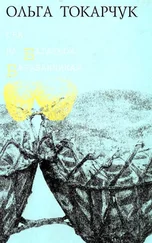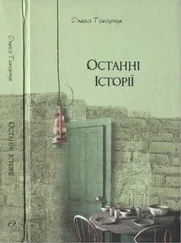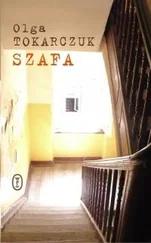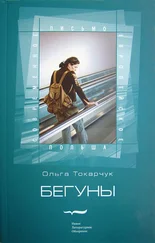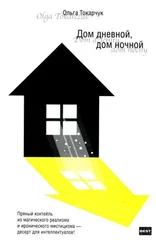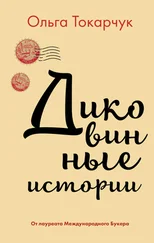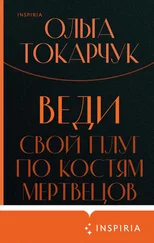The last time I went to Filip Verheyen’s was in November 1710, called by his servant. I found my friend in a very poor state and it was difficult to communicate with him. He was sitting at the south window, looking through it, but I had no doubt that the only thing this man could see were his own internal images. He didn’t really react to my entrance, just looked at me without interest, nor any sort of gesture, then turned back to the window. On the table lay his leg, or what remained of it, for it had been taken apart into hundreds or thousands of little pieces, tendons, muscles and nerves broken down into their smallest components, all of which covered the whole surface of the table. His servant, a simple person from the country, was frightened. He was afraid to even go into his master’s room, and the whole while he gave me signs behind his back, silently commenting on his reactions, moving just his lips. I examined Filip as best I could, but the diagnosis wasn’t good – it seemed that his brain had stopped working and that he had fallen into some sort of apathy. I knew, of course, that he suffered attacks of melancholy; now the black bile had reached the level of his brain – perhaps because of those, as he called them, phantom pains. The last time I had brought him maps, for I had heard that nothing cures melancholy like looking at maps. I prescribed him rich foods for strength, and rest.
At the end of January I learned that he had died and immediately hastened to Rijnsburg. I found his body already prepared for the funeral, washed and shaved, lying in a coffin. Around his cleaned-up home were some relatives from Leiden, and when I asked the servant about his leg, he only shrugged. The great table by the window had been scrubbed and washed with lye. When I tried to ask further what had become of that leg, which Filip had repeated so many times that he wanted buried with his body, the family dismissed me. He was buried without it.
By way of comfort and appeasement I was given a sizeable stack of Verheyen’s papers. The funeral took place on the twenty-ninth day of January in the abbey of Vlierbeek.
LETTERS TO THE AMPUTATED LEG
The loose pages I received after Verheyen’s death put me in confusion. Throughout the last years of his life my teacher recorded his thoughts in the form of letters to a particular correspondent, a circumstance I’m certain anyone would deem sufficient proof of his madness. However when one carefully reads these hurried notes, which were almost certainly intended as an aidemémoire rather than for someone else’s eyes, one sees in them the record of a kind of journey to an unknown land and an attempt to sketch out its map.
I thought long and hard about what I ought to do with this unexpected inheritance, but I decided against its publication in any form. I, his student and friend, would prefer for him to be remembered as a wonderful anatomist and draftsman, the discoverer of the Achilles heel and several previously unnoticed parts of our body. I would prefer for us to remember his beautiful engravings and accept that it is impossible to understand everything of anyone else’s life. But to address the rumours that have been spreading after his death in Amsterdam and Leiden – that the master had gone mad – I wish to briefly present several excerpts from his papers here and demonstrate in so doing that he was not mad. I have no doubts, meanwhile, that Filip allowed himself to be overwhelmed by a particular obsession connected with his inexplicable pain. Obsession is, in any case, the premonition of the existence of an individual language, an irreproducible language through the attentive use of which we will be able to uncover the truth. We must follow this premonition into regions that to others might seem absurd and mad. I don’t know why this language of truth sounds angelic to some, while to others it changes into mathematical signs or notations. But there are also those to whose whim it speaks in a very strange way.
In the Letters to My Amputated Leg Filip attempted to prove coherently and without emotion that since the body and soul are in essence one and the same, since they are two attributes of an infinite, all-encompassing God, there must be between them some sort of proportionality designed by the Creator. Totam naturam unum esse individuum . This is in essence what interested him the most: in what way do such distinct substances as the body and the soul connect in the human body and act upon one another? In what way can the body, occupying space, establish causal contact with a soul that occupies no space? How and from whence does pain arise?
He wrote for example:
What is it that awakens me, when I feel pain and suffering, since my leg has been separated from me and is floating now in alcohol? There is nothing pinching it, no reason for its suffering, no such pain that can be logically justified and yet it exists. Now I look at it and simultaneously feel in it, in the toes, unbearably hot, as though I were submerging it in hot water, and this experience is so real, so obvious, that if I were to shut my eyes, I would see in my own imagination the bucket of water overly heated and my own foot submerged from toes to ankle. I touch my bodily existing limb in the guise of a lump of preserved flesh – and I don’t feel it. I feel, meanwhile, something that does not exist, it is in a physical sense an empty place, there is nothing there that might give any sensation whatsoever. The thing that hurts does not exist. A phantom. Phantom pain.
The combination of these words initially appeared strange to him, but he soon began to use the phrase readily. He also took detailed notes on the progressive dissection of the leg. He took it more and more apart; after a while he was left with no choice but to proceed with the aid of a microscope.
‘The body is something absolutely mysterious,’ he wrote.
The fact that we so precisely describe it does not at all mean that we know it. It is like an argument from Spinoza, that lens grinder who polishes glass precisely in order that we are able to examine every thing more closely, who creates an incredibly difficult language in order to express his thought because it is said: seeing is knowing.
I want to know, and not give in to logic. What do I care about a proof from the outside, framed as a geometric argument? It provides merely a semblance of logical consequence and of an order pleasing to the mind. There’s A, and after A comes B, first definitions, then axioms and numbered theorems, some supplementary conclusions – and you might have the impression that such command is reminiscent of a wonderfully sketched etching in an atlas, where with letters particular sections are marked, where everything seems so clear and transparent. But we still don’t know how it all works.
Yet he believed in the power of reason. And that it was in its nature to consider things as necessary, not accidental. Otherwise, of course, reason would negate itself. He argued over and over that we had to trust our reason, because it was given us by God, and God is after all perfect, so how could he furnish us with something that would deceive us? God is not a deceiver! If we use the powers of our intellect in the right way, we will ultimately attain truth, learn everything about God and about ourselves, we who are a piece of him, like everything else.
He insisted that the highest sort of reason is intuitive, not logical. Learning intuitively, we will immediately notice the deterministic necessity of the existence of all things. Everything that is necessary cannot be otherwise. When we really realize this, we will experience great relief and purification. We will no longer be unsettled by the loss of our belongings, by the passage of time, by ageing or death. In this way we will gain control over our affects and attain some peace of mind.
Читать дальше

